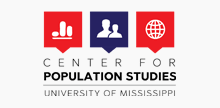Abstract
It has been documented that not all rural residents are leaving rural counties equally. Social positions may prevent some groups from migrating, while pushing other groups away from rural counties. This paper uses an intersectionality theoretical approach to explain how race/ethnicity, gender, and class shape occupational aspirations and the migration decision. Using the NLSY79, race/ethnicity, gender, and mothers’ educational attainment were each combined with the respondent’s occupational aspiration to predict migration rates for selected intersectional groups. Results show that females with high occupational aspirations, whites with high occupational aspirations, and individuals with high occupational aspirations whose mothers had high educational attainments were more likely to migrate compared with other intersectional groups.
Recommended Citation
Brooks, W., and Meredith Redlin. 2009. "Occupational Aspirations, Rural to Urban Migration, and Intersectionality: A Comparison of White, Black, and Hispanic Male and Female Group Chances for Leaving Rural Counties." Journal of Rural Social Sciences, 24(1): Article 8. Available at: https://egrove.olemiss.edu/jrss/vol24/iss1/8
Publication Date
4-30-2009



